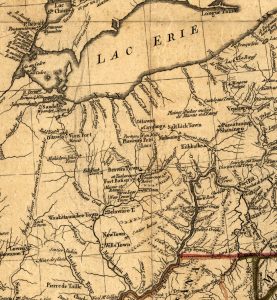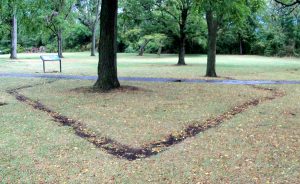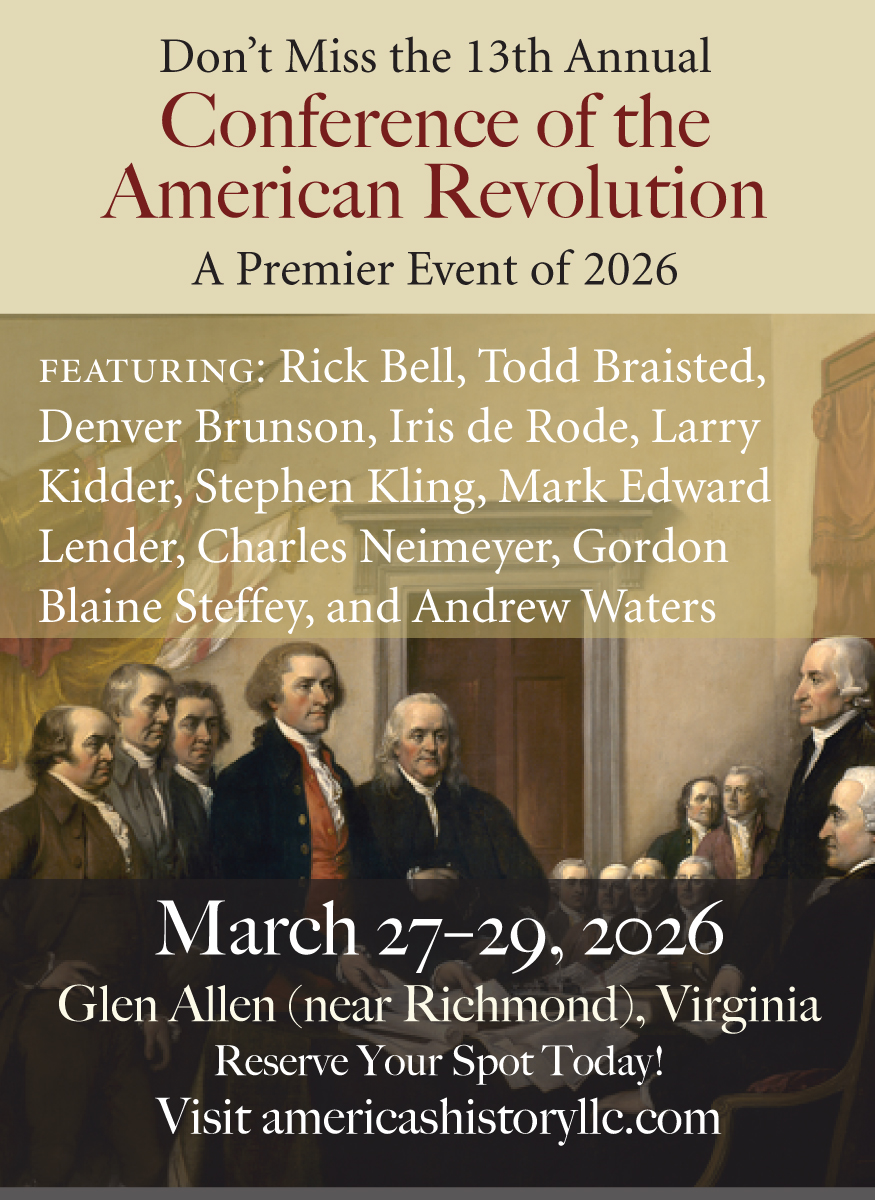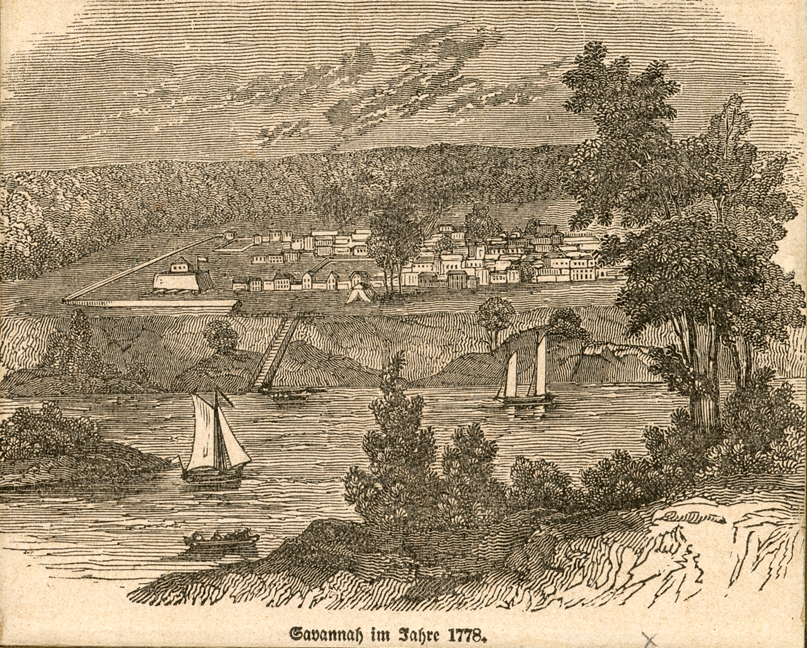During the American Revolution, British-allied Native Americans raided American homesteads and settlements all along the Ohio Valley. As the war progressed, the increased frequency and ever-widening circle of Indian raids forced the Continental Congress and Army to respond. In 1778, a Congressional committee studied the matter and concluded that a defensive war “would not only prove an inadequate security against the inroads of the Indians, but would, in a short time, be much more expensive than a vigorous attempt to compel them to sue for peace.” Then it drafted a resolution “That an expedition be immediately undertaken, whose object shall be, to reduce, if practicable, the garrison of Detroit, and to compel to terms of peace such of the Indian nations now in arms against these states as lie on, or contiguous to, the route betwixt Fort Pitt and Detroit.”[1] It wanted 3,000 men for the mission. Washington made available only the 8th Pennsylvania Regiment under Col. Daniel Brodhead and the 13th Virginia under Col. John Gibson, roughly 250 men. Congress hoped the Virginia militia would provide the rest. The state disapproved, but authorized Brigadier Lachlan McIntosh, whom Washington had appointed to command in the west, to call on county lieutenants closest to Fort Pitt, in effect leaving it to the locals.[2]
McIntosh employed his considerable organizational talents to assemble about 1,200 men by the fall. After concluding a peace treaty with the nearby Delaware Nation, McIntosh put his new army into motion on October 23, 1778. He established Fort McIntosh on the Beaver River about twenty miles below Pittsburgh. The small stockade would serve as a supply depot to sustain an overland campaign against Detroit. On November 4, his army resumed its march.[3]
McIntosh reached the Muskingum River’s eastern tributary, known today as the Tuscarawas, on November 18. With supplies running low, he resolved to build another fort as a supply depot for future operations and named it Fort Laurens. Supplies remained scarce. One soldier recalled they were “put on short allowance, quarter of a pound of flour each pr day; nearly two weeks thus allowed.”[4] So McIntosh dispatched three companies to Fort McIntosh to load supplies and bring them to Fort Laurens. His army began its return to Pittsburgh on December 9, leaving about 150 men behind to finish and garrison the fort. Six inches of snow lay on the ground and the army marched hungry, the bulk of it disorderly, as the militia often were.[5] On the way, the army encountered the three companies McIntosh had dispatched earlier on the return leg of their mission. The militia company promptly rejoined the army in its return to Pittsburgh, leaving the other two to complete the supply run to Fort Laurens.
Fort Laurens was built on a rise above the river. It was a typical stockade created by driving split hard-wood timber vertically into a three-foot trench, one timber next to the other, and then packing dirt back into the trench to hold the beams upright. Each timber was about six inches thick and stood roughly fifteen feet tall. A square blockhouse stood just to the right of the landward gate, hanging over the walls so the garrison could fire down onto anyone attacking the gate. The large wall covered the three landward sides; the river largely protected the fourth. Two larger buildings were constructed inside the stockade and served as a storehouse and barracks.[6] Additional huts covered the parade ground inside the walls.[7] They were temporary structures that had more in common with the huts quickly thrown up at Valley Forge than a traditional fortification. Overall, Fort Laurens covered about an acre. It lacked artillery and could not withstand a typical siege. But, it would be enough to hold off the kind of infantry assaults that characterized fights with Native Americans. Col. John Gibson commanded the garrison, comprised mostly of Continentals from the 13th Virginia Regiment.

As hungry as McIntosh’s troops were on their return to Pennsylvania, Gibson’s began to suffer immediately. On January 1, Gibson reported that he was short of clothing to fight the mounting cold and could not complete work on the fort.[8] Subsequently, he dispatched a trader, Samuel Sample, to acquire supplies from the Delaware villages at nearby Goschgosching, where the eastern and western tributaries of the Muskingum come together. Sample set up camp across the river from the Delaware town, setting a small guard to protect it while he traded. One of the guards was killed and scalped by a local Delaware. A few days later, some of Sample’s best horses and pack animals were run off. After receiving apologies from Delaware leaders, the caravan gathered to return to the fort, only to be attacked again.[9] Nevertheless, Gibson offered to provide security for a nearby community of Indians who had converted to Christianity under the tutelage of Moravian missionaries. They declined, noting, “the war will go wherever there is a Fort, and we are safest far away from there.”[10]
Indeed, the fort’s existence had drawn the attention of the British and their Native American allies. As Colonel Gibson struggled to feed his men, word arrived that Simon Girty, who had recently defected to the British, was leading eighteen Indian warriors toward Fort Laurens.[11] They were insufficient for an assault, but could harass supply and communications links and make the surrounding country inhospitable to foraging parties.
Girty’s small force, which actually included twenty to thirty Mingo warriors, arrived on January 21, as a small resupply column commanded by Capt. John Clark of the 8th Pennsylvania reached Fort Laurens. Too late to intercept the incoming column, Girty set up an ambush a few miles east of Fort Laurens, hoping to attack it on its return. The next day, Clark departed for Fort McIntosh and walked into the middle of Girty’s ambush. The initial Indian volley killed two Americans outright, wounded four, and enabled Girty’s party to seize one prisoner.[12] Clark ordered his men to charge bayonets, preparing to rush the woods. Girty thought better of engaging in hand-to-hand combat and drew off. Clark returned to Fort Laurens.[13] Now aware that he could not rely on overland supply routes, McIntosh ordered Maj. Richard Taylor of the 13th Virginia to attempt to resupply the fort by water, traveling down the Ohio and then up the Muskingum. The supplies could also support the nearby Delaware Indians, still nominally friendly. Indians ambushed Taylor at the Muskingum’s mouth and he turned back. He finally returned to Fort Pitt on March 12, his mission a failure.[14]
Girty returned to Detroit with his prisoner and pressed for a larger force to attack Fort Laurens. The acting commander, Capt. Richard Lernoult, was concerned about the weakness of his own defenses, but eventually relented. He sent Capt. Henry Bird and volunteers from the 8th (King’s) Regiment with Girty to assemble an Indian war party on the Sandusky River, where the Wyandot nation lived along with some allied Mingo and Delaware Indians.[15]
Arriving there, Bird was disappointed at the size of the Indian force available. He had to watch the Indians torture to death one prisoner. After finally slitting the man’s throat, they dismembered him. Bird had the remains buried, only to see them dug up and the head mounted on a post.[16] The British captain was outraged, but the British officer and Indian leaders patched things up well enough to depart the Sandusky, bound for Fort Laurens. They arrived on February 22 and scattered in the woods, hidden from the garrison.
Gibson, unaware of the mixed British and Indian force around his post, sent out a work party of nineteen men with horses and wagons to cut trees and collect firewood the next day. When they were out of range from the fort, Bird and Girty struck, killing and scalping everyone while the garrison watched from the fort.[17] That evening, the Indians marched through the clearing outside the fort in full war regalia, attempting to intimidate the defenders by inflating their numbers.[18] With that, some of the Indian leaders departed for the Delaware towns downstream, hoping to recruit more warriors. They left behind a loose cordon to bottle up the garrison inside the fort’s walls and prevent any supplies from reaching it.[19]
The siege, more of a blockade, had effects inside the walls. Capt. Benjamin Biggs of the 13th Virginia remembered, “The siege lasted 4 weeks, provisions exhausted; finally for 3 or 4 days had to live on half a biscuit a day—then the last two days washed their moccasons and broiled them for food, and broiled strips of old dried hides.” Some men snuck out of the fort and killed a deer, which the garrison promptly consumed, some without waiting to cook it.[20] Outside the walls, the Indians also suffered from the weather, although they could hunt more efficiently. Warriors began to drift away. Eventually, only three small parties remained, primarily to stalk the trail connecting Forts McIntosh and Laurens, which any overland supply convoy must travel.[21]
Taylor’s failure to resupply Fort Laurens by water forced McIntosh to assemble another relief effort. He set off for Fort Laurens with 500 men and ample supplies on March 19, 1779.[22] He arrived in the evening of March 23, having left some supplies behind due to a shortage of healthy packhorses. As the caravan hove within sight, the garrison let loose a round of celebratory firing. The sudden musket fire spooked some of the horses, which bolted and dumped much of their cargo to the ground or ran off with it altogether. The relief convoy and garrison spent the last rays of sunlight attempting to recover the horses and what supplies could be salvaged. The great majority was lost.[23] If McIntosh sincerely had hoped to press on and attack British-allied Indians, as he later asserted, the loss of supplies made it impossible. So, the general replaced Gibson’s bedraggled Continentals with 106 men of the 8th Pennsylvania under the command of Maj. Frederick Vernon.[24]
Although the weather had led Bird and Girty to largely abandon their blockade, and McIntosh’s relief column had rendered it moot, British-allied Indians remained in the area. At the end of March, Vernon sent out another wood-cutting party under a junior officer. Nearby warriors fired a volley, killing the ensign and a nearby sentinel, quickly followed by a scalping. The warriors dispersed and Vernon found only evidence of a handful of them.[25] In April, Brodhead reported that the fort was amply supplied, but that the horses there had been killed or driven off and it was still not safe to send soldiers far from the walls.[26]

Events on the Ohio shifted that spring. George Rogers Clark’s successes in the Illinois country, including the capture of Lt. Gov. Henry Hamilton, drew British attention westward. Meanwhile, Iroquois raids in northern Pennsylvania and New York drew Washington’s attention eastward, where he ordered Gen. John Sullivan to conduct a campaign against the Six Nations. McIntosh, a Georgian who had never been popular around Pittsburgh, requested reassignment. Colonel Brodhead assumed command. The colonel viewed Fort Laurens as a liability. Ordered to cooperate with Sullivan, he argued for abandoning the fort and finally ordered the garrison out on July 16. As it assembled to march on August 1, Indian raiders bound home from the Ohio sniped at it, killing two men standing guard.[27] The last Continentals finally departed on August 2, leaving Fort Laurens behind to fall to the ravages of time. Today, cobblestones mark the remaining outline of the original walls and a museum tells its story.
[1]“Resolution of Congress, June 11, 1778,” Louise Phelps Kellogg, ed., Frontier Advance on the Upper Ohio, 1778-1779(Madison, WI: The State Historical Society of Wisconsin, 1916), 89.
[2]“Resolutions of Virginia Council, July 7, 1778,” ibid., 104.
[3]Thomas L. Pieper and James B. Gidney, Fort Laurens, 1778-1779: The Revolutionary War in Ohio(Kent, OH: Kent State University Press, 1976), 31.
[4]“Recollections of Stephen Burkam,” Kellogg, Frontier Advance, 157.
[5]Pieper and Gidney, Fort Laurens, 41.
[6]“Recollections of John Cuppy,” Kellogg, Frontier Advance, 158-159.
[7]“Recollections of Capt. Jacob White,” ibid., 163.
[8]“Col. John Gibson to Gen. Lachlan McIntosh, Jany 1 1779,” ibid., 190-191.
[9]“Col. John Gibson to Gen. Lachlan McIntosh 13th Feb. 1779,” ibid., 224-225; Pieper and Gidney, Fort Laurens, 51-52.
[10]Hermann Wellenreuther and Carola Wessel, eds., The Moravian Mission Diaries of David Zeisberger, 1772-1781(University Park, PA: The Pennsylvania State University Press, 2005), 491.
[11]“David Zeisberger to Col. George Morgan, January 20, 1779,” Kellogg, Frontier Advance, 201-202.
[12]Alan Fitzpatrick, Wilderness War on the Ohio,New Revised Second Edition (Benwood, WV: Fort Henry Publications, 2005), 289-290; “Gen. Lachlan McIntosh to Col. Archibald Lochry, Jan. 29, 1779,” Kellogg, Frontier Advance, 210-211.
[13]“Reminiscences of Henry Jolly,” ibid., 211.
[14]“Gen. Lachlan McIntosh to Hon. Henry Laurens, 13 March, 1779,” ibid., 249-251; Pieper and Gidney, Fort Laurens, 56-57.
[15]Fitzpatrick, Wilderness War on the Ohio, 296-297.
[17]“Gen. Lachlan McIntosh to Gen. George Washington. March 12 1779,” Kellogg, Frontier Advance, 240-241.
[18]Pieper and Gidney, Fort Laurens, 59.
[19]Fitzpatrick, Wilderness War on the Ohio, 299.
[20]“Recollections of Benjamin Biggs,” Kellogg, Frontier Advance, 256-257.
[21]Pieper and Gidney, Fort Laurens, 59.
[22]“Gen. Lachlan McIntosh to Gen. George Washington, 19 March 1779,” Kellogg, Frontier Advance, 256.
[23]“Recollections of Henry Jolly,” Kellogg, Frontier Advance, 257; Pieper and Gidney, Fort Laurens, 63.
[24]Pieper and Gidney, Fort Laurens, 64-65.
[25]“Maj. Frederick Vernon to Gen. Lachlan McIntosh and Maj. Frederick Vernon to Col. Daniel Brodhead, 28 March, 1779,” Kellogg, Frontier Advance, 264-265.
[26]“Col. Daniel Brodhead to Gen. George Washington, April 17, 1779,” ibid., 287.









4 Comments
Captivating and thought-provoking article!
Sounds like an ill-conceived campaign plan from the start. From the start, the fort had no strategic value and could not even command its surroundings. Further, there was no way to leverage the fort’s supply capabilities with the limited forces at hand to establish a secure supply route all the way to Detroit. Even if an assault force made on the walls of Detroit, the Rebels lacked cannon to reduce the British stockade and a siege was out of the question. Apparently, the Congressional overseers did not learn lessons from Arnold’s ill-fated march through Maine without sufficient resupply or any guns to capture Quebec.
I wonder if anyone in Congress lamented the considerable loss of life for no gain. Perhaps, John Sullivan deserves more credit in the Six Nation campaign by turning around after destroying crops and villages and not overextending by trying to capture Fort Niagara, for which he received criticism.
Thanks. There are a lot of issues to explore in the frontier war. Settlers all along the Ohio viewed Detroit as the English center of mass throughout the war. It was critical to British frontier logistics and a defensive war only ceded the initiative to Britain and its allies. It was also true that preemptive and spoiling attacks on various Indian nations only provided temporary respite from attacks. McIntosh’s predecessor, Edward Hand, and his successors, Daniel Brodhead and William Irvine, all shared that analysis, as did most of the militia leaders. (They did develop different operational plans.) Throughout the war, their intelligence also led them to believe that Fort Detroit could be assaulted and either destroyed or seized in a surprise infantry assault. The British garrison was modest and depended on local Indian allies and French militia for its robustness. Both the Indians and French had proved fickle on the frontier, so the Congressional Committee wasn’t too far off the mark in hoping that the fort’s fall would cow them into submission. Clark had done something similar in the Illinois country. (Ironically, Arnold’s campaign had choked off British supplies flowing to Detroit and the western nations by interdicting supplies moving down the St. Lawrence and along the Great Lakes, which meant that the frontier war in Ohio was slower to escalate in the first few years after Lexington and Concord. The Americans might have given that kind of approach greater attention when it came to protecting settlements along the Ohio frontier.)
You hit the nail on the head; American plans and resources were entirely inadequate to the task. Surprise precluded taking artillery, which ruled out a long-term siege if the initial infantry assault failed. Worse, should the infantry assault fail, an American expeditionary force would be trapped deep in hostile territory and more vulnerable than Arnold ever was and have no hope of uniting with a second column a la Montgomery. Washington seemed to recognize it, even if Congress, Continental officers serving on the frontier, and the militia didn’t. On a few occasions, he told Brodhead and his successor to shelve the idea.
Fort Laurens was oddly placed and I suspect McIntosh selected the site because his army ran out of steam as it reached the eastern branch of the Muskingum. That was partly because he started late; it took time to assemble an army dominated by short-term militia mobilization and the need to secure a reasonable peace with the Delaware Indians along the Muskingum in the summer and fall of 1778. He did intend to return in the spring of 1779, though, and resume the campaign, building forts along the way. It was a strategy similar to the one Anthony Wayne followed successfully in the Northwest Indian Wars after the Revolution. Key differences were: 1) McIntosh relied primarily on short-term militia whereas Wayne had a fully trained army in for the duration; 2) McIntosh had to compete for resources with far more important theaters along the eastern seaboard; and, 3) he simply did not have the kind of time that Wayne enjoyed. (He was also extraordinarily unpopular with the locals.) The weakness of his March 1779 resupply mission suggested to me that he had significantly lowered his expectations, although insisted to anyone who listen after the fact that he still intended to advance overland across Ohio.
With all that in mind, I think we’d agree that Washington/Sullivan hit on a better strategy, large and significant enough raids to drive the Iroquois back on overstretched British resources, whereas militia offensives into the Ohio country did not inflict as much long-term damage.
Alas, the cold military calculations of war…
For several years I have been attempting to craft the story of Captain John McKinley from his early life in Ireland to his demise at Sandusky in 1782. Only recently I’ve uncovered the time he spent at Fort Laurens. You’ve written several pieces that I’ve referenced ….especially portions about the Crawford Expedition. One of my myriad questions is what happened to the 13th Virginia regiment when Fort Laurens was abandoned? We’re they reassigned to Fort Pitt? Please respond
An excellent essay on a part of the war that gets too little attention. This is one of many campaigns against the northwestern Indians that failed and it invites comparison with the campaigns led by Braddock, Hand, Crawford, Harmar, and St. Clair. There are parallels with those campaigns that are interesting–especially Braddock and St. Clair. The contrasts with more successful efforts are also interesting and maybe more complicated: Point Pleasant, Peckuwe, Sullivan’s campaign, and Wayne’s campaign. The general lesson may be that there were two ways to successfully engage the Indians: quick attacks conducted by light troops with no supply train or overwhelming force with a supply train.